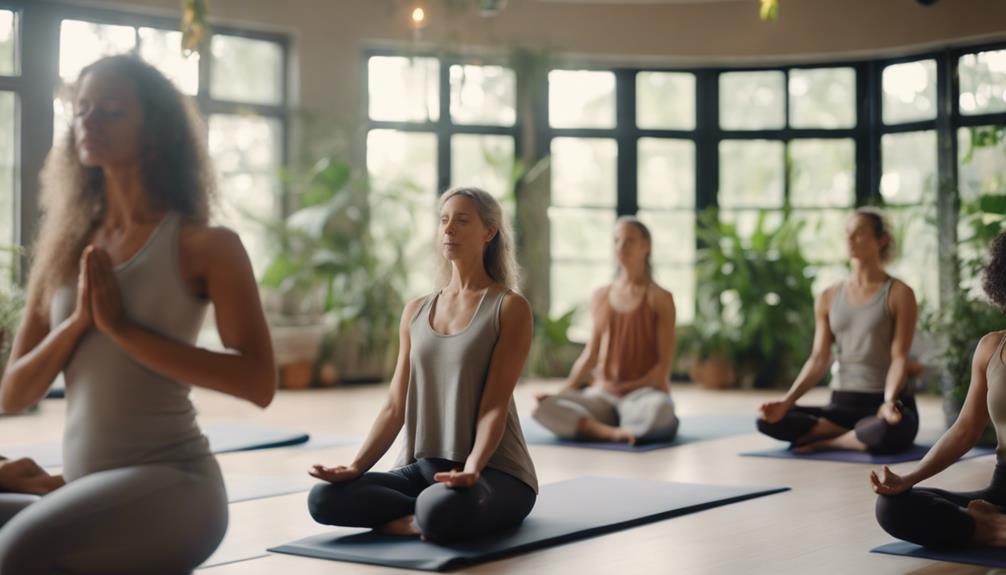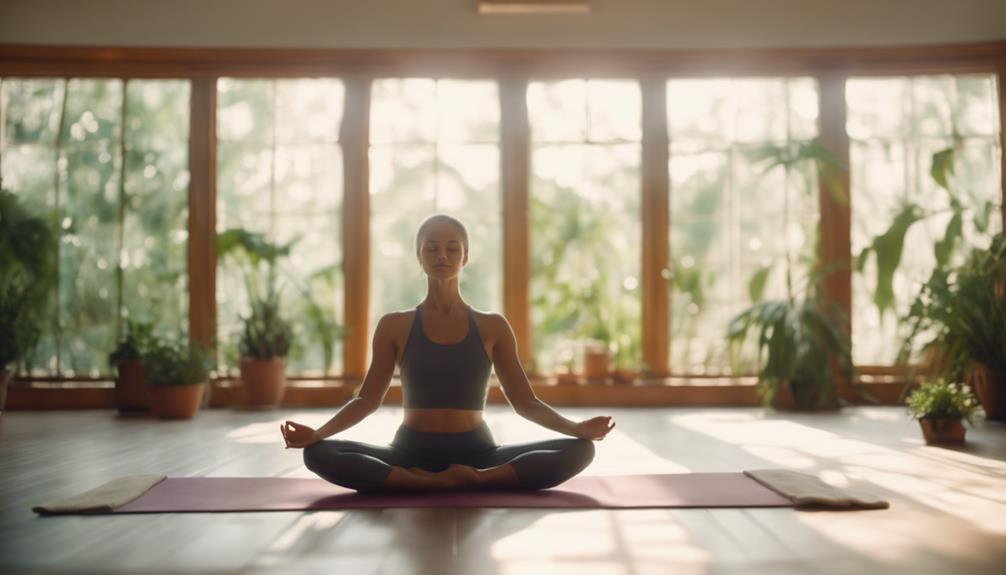How to Incorporate Mindfulness into Yoga
countless us fight to find previews of harmony and quietness amidst the commotion of everyday presence. One practice that has become dynamically notable actually for its ability to propel relaxation and mindfulness can’t avoid being mindfulness. By incorporating mindfulness techniques into yoga, we can not simply deepen our practice on a physical level yet moreover foster a deeper relationship between mind, body, and soul.
1. Start by setting a hold back nothing practice and convey your focus to the ongoing second.
Concerning coordinating mindfulness into your yoga practice, the underlying step is to start by defining an objective and conveying your focus to the ongoing second. This suggests being totally present and participated in each and every turn of events, breath, and sensation all through your practice.
Setting a go for the gold can assist you with remaining focused and grounded, as it gives you something to get back to whenever your mind starts to wander. Your assumption could be whatever influences you really – whether it’s to find a feeling of harmony, foster backbone, or basically to be accessible at that point. Stop briefly before you start your practice to consider what you want to secure from your time on the mat, and a while later put forth that objective to you.
At the point when you have set your assumption, the accompanying stage is to convey your fixation to the ongoing second. This suggests giving up any distractions or stresses from a prior time or future, and actually, totally lowering yourself in right here and now. One technique for doing this is to focus in on your breath – the energy of air moving all through your body, the rising and fall of your chest or waist with each breathe in and breathe out. Use your breath as an anchor to keep you laid out the present moment, allowing it to guide you through your movements and keep your mind away from wandering.
Another technique for conveying your fixation to the ongoing second is to zero in on the sensations in your body as you travel through your practice. Notice the stretch of your muscles, the warmth in your body, the throbbing of your heart. By tuning into these physical sensations, you are bringing yourself totally into the ongoing second and fostering a sensation of mindfulness and presence.
It’s important that mindfulness isn’t connected to being perfect or achieving a particular level of concentration – it’s basically about remaining ready and mindful of what’s happening at present. Accepting your mind wanders or gets occupied during your practice, gently return your focus to your breath, your body, and your assumption. Be patient and sympathetic with yourself, as mindfulness is an aptitude that requires a venture and practice to make.
By defining an objective for your practice and conveying your fixation to the ongoing second, you can begin to coordinate mindfulness into your yoga practice in a huge and transformative way. With each breath, each turn of events, and each depiction of mindfulness, you are fostering a deeper sensation of relationship with yourself and to the ongoing second.
2. Practice deep breathing techniques to help concentration and ground yourself during your yoga session.
Concerning incorporating mindfulness into your yoga practice, one of the most incredible techniques is to practice deep breathing all through your session. Deep breathing assists with focusing and ground yourself, however it likewise allows you to interact even more deeply with your body and the ongoing second.
To start coordinating deep breathing techniques into your yoga practice, begin by sitting or staying in a comfortable position. Close your eyes and convey your thoughtfulness regarding your breath. Take a deep breathe in through your nose, allowing your lungs to fill absolutely with air. Feel your chest and girth reaching out as you breathe in.
As you breathe out, slowly release the breath through your mouth, feeling strain and stress disregarding your body with each breath. Yet again breathe in deeply, and continue with this illustration of deep breathing all through your yoga practice.
As you base on your breath, you could begin to see your mind turning out to be all the more quiet and more engaged. Contemplations and distractions could arise, however by returning your respect for your breath, you can surrender these distractions and totally lower yourself at the present time.
Deep breathing also assists with relaxing your body and conveyance strain in your muscles. As you breathe deeply, imagine your breath spilling into areas of coziness or distress, allowing them to convey and relax with each breathe out.
Coordinating deep breathing into your yoga practice can likewise assist you with staying present and connected as you travel through different poses and progressions. By interfacing your breath to your movements, you can make a sensation of stream and effortlessness in your practice, allowing you to move even more mindfully and easily on your mat.
Important’s fundamental deep breathing is an aptitude that takes practice and resistance. Expecting you find it attempting at every turn, be empowered. Start by incorporating deep breathing into a few poses or minutes generally through your practice, and bit by bit increase how much time you spend focusing on your breath.
Incorporating deep breathing into your yoga practice can altogether influence your overall thriving. By practicing deep breathing techniques regularly, you can diminish stress, work on mental clarity, and further develop your mind-body affiliation.
3. Begin your practice with a few minutes of meditation to quiet the mind and connection point with your body.
Coordinating mindfulness into your yoga practice can deepen your mind-body affiliation and upgrade the general benefits of your practice. One practical strategy for starting creating mindfulness during your yoga session is in any case a few minutes of meditation.
Meditation is an astonishing resource for quieting the mind and focusing your accentuation on the ongoing second. By requiring a few minutes to sit in quietness and notice your breath, you can make a sensation of quiet and presence that will assist you through your yoga with rehearsing.
To begin your meditation, find a comfortable arranged position with your spine straight and your hands laying bowing down. Close your eyes and take a few deep breaths, allowing yourself to totally show up this moment. Notice the impressions of your breath as it moves generally through your body, and let go of any redirecting contemplations or stresses.
As you keep on breathing mindfully, you could see that your mind starts to wander. This is absolutely common and ordinary. Right when you find yourself becoming associated with contemplations, fundamentally acknowledge them without judgment and carefully helper your thought back to your breath.
By incorporating this mindfulness practice into your yoga plan, you can foster a deeper cognizance of your body and breath, allowing you to go through your practice with more conspicuous assumption and presence. This uplifted mindfulness can assist you with moving even more mindfully, preventing injury and propelling a more critical sensation of overall flourishing.
As well as quieting the mind, starting your practice with meditation can likewise assist you with interfacing with your body on a deeper level. By tuning into the energies of your body as you sit in quietness, you can encourage a more essential sensation of significant mindfulness that will bring through your yoga practice.
As you start your physical practice, center around the subtle sensations in your body as you travel through each pose. Notice the stretch of your muscles, the musicality of your breath, and the alignment of your body. By staying present and mindful of these sensations, you can ensure that you are moving in a way that is secured and agreed with your body’s necessities.
As a rule, incorporating a few minutes of meditation into the beginning of your yoga practice can assist you with creating mindfulness, quiet the mind, and partner with your body on a deeper level. By cultivating these capacities, you can work on the benefits of your yoga practice and foster a more unmistakable sensation of flourishing both on and off the mat.




